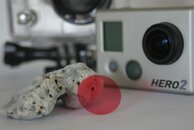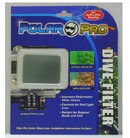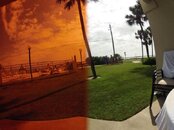Marty Cerven
Contributor
Just a few quotes on some of the claims made by Interceptor and the last quote is his definitive proof lol.
And here is the conclusive proof from your blog.
Care to give any reasoning behind this as you promised so much yet delivered so little. It may absorb colour? thats far from definitive proof of a design flaw that you are showing there. If you cant find an issue with the design whats the point of that comment?
I have doubts about your background as it doesn't show through in how you are coming to your conclusions, making claims based on physics should be proved explaining your theory and then proven in a practical test. Otherwise the claims are completely pointless and show little more then someone trying to make their opinion appear more valid, once you look into it all credibility of the claim is lost if that is all you have to back up such claims.
Just please stop claiming to be any more then just a general user with an opinion, its fine everyone has one just no need to pretend to be more then that. If you claim physics and science as a basis for your opinion show it! and if you cant show that then dont make such claims.
I thought that it would have been useful to all gopro users to understand how a filter really works and what it can or not do for you
Underwater Video Tips: Using filters with your GoPro or Compact Camera « Interceptor121 Underwater Video
Next issue we look at the polarpro filter vs SRP and why is on better than the other
Marty you lack the understanding of the physics behind and now try to climb on some things that do not relate trying to put them together
The reason why that dome SRP does not perform well (am not saying anything compared to polarpro) is because there is a design flaw similar to the one of the SRP tray (no point comparing it to a video housing where the positioning or arms depends on other design decisions and also a camcorder has different field of view)
The gopro is a small camera with around 110 degrees field of view in water, video lights are designed for cameras with 65-80 degrees fov, in order to illuminate the subject at the distance the gopro can focus the arms need to be further away. Why would someone spend more money for a tray that needs longer arms than need to be?
Anyway this is pointless maybe you can stop hijiacking the thread and just wait until you see what the issues with this dome are? Hint it is not that difficult just look at all the other filters on the market place and how they are designed. Were they all waiting for the genius of SRP?
I am surprised about the lack of knowledge about what a filter is and how it works, there will be some reasons why this filter performs better than the SRP and have to do with physics I am going to put some content on my blog so far I have not bothered with gopros but I think it is time
And here is the conclusive proof from your blog.
The SRP dome has a design issue as there is a layer of water between the lens and the filter that may absorb color and cant be recovered
Care to give any reasoning behind this as you promised so much yet delivered so little. It may absorb colour? thats far from definitive proof of a design flaw that you are showing there. If you cant find an issue with the design whats the point of that comment?
I have doubts about your background as it doesn't show through in how you are coming to your conclusions, making claims based on physics should be proved explaining your theory and then proven in a practical test. Otherwise the claims are completely pointless and show little more then someone trying to make their opinion appear more valid, once you look into it all credibility of the claim is lost if that is all you have to back up such claims.
Just please stop claiming to be any more then just a general user with an opinion, its fine everyone has one just no need to pretend to be more then that. If you claim physics and science as a basis for your opinion show it! and if you cant show that then dont make such claims.







